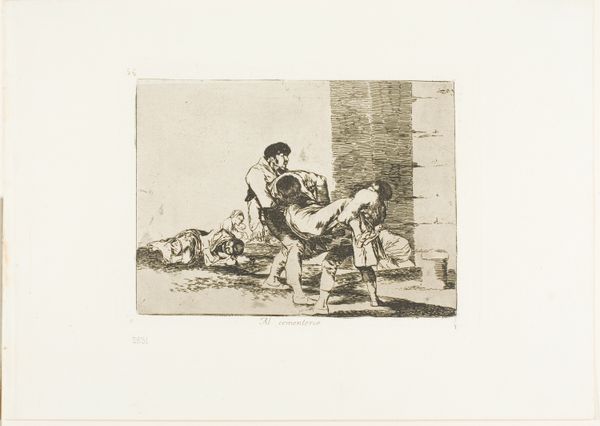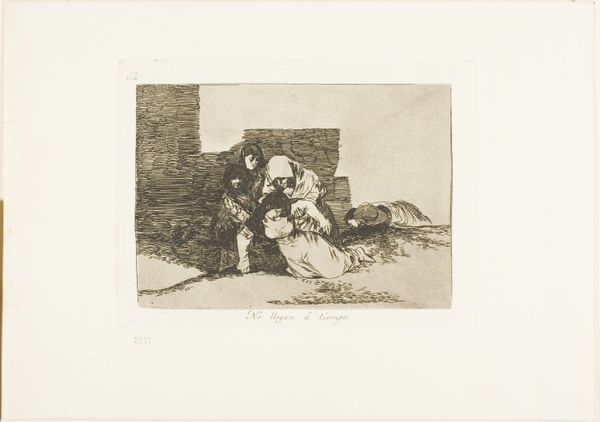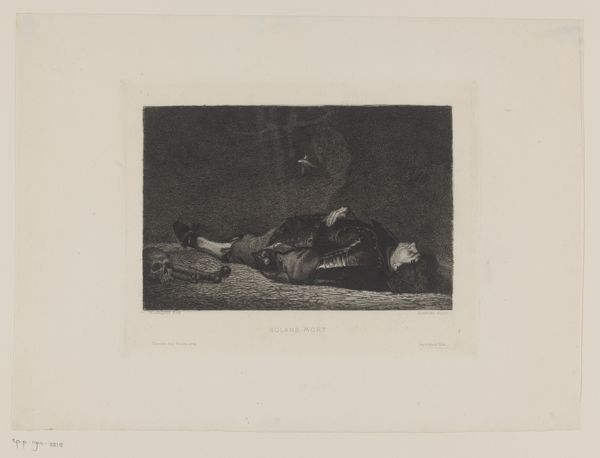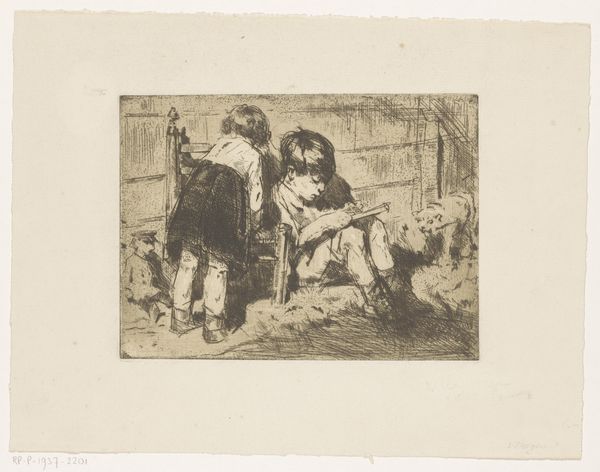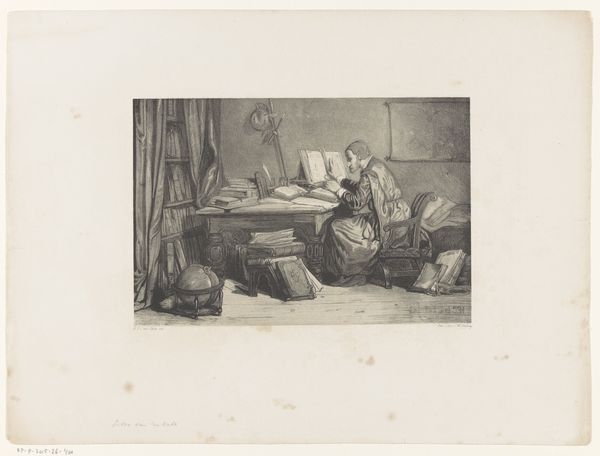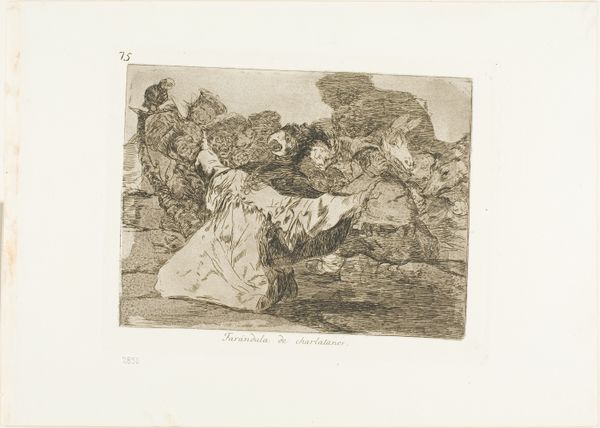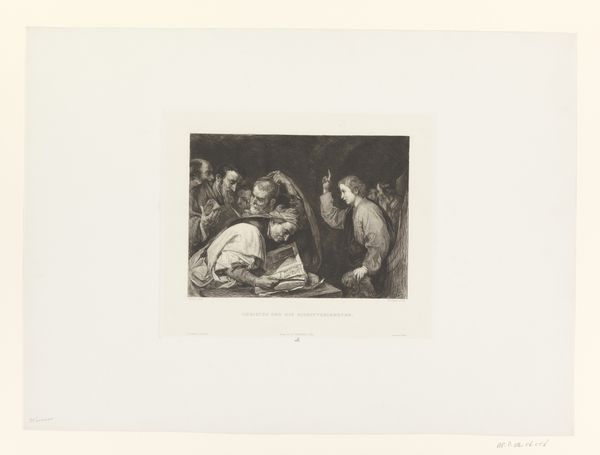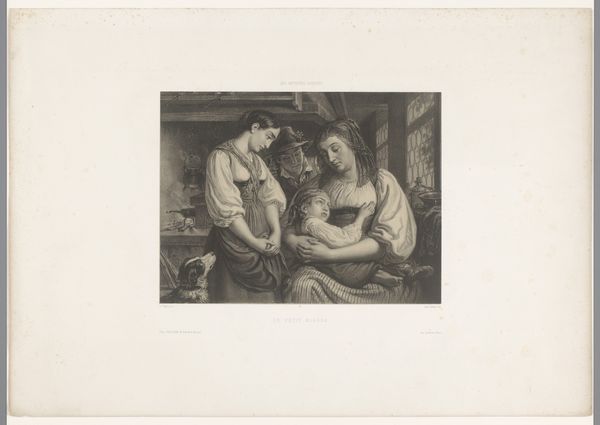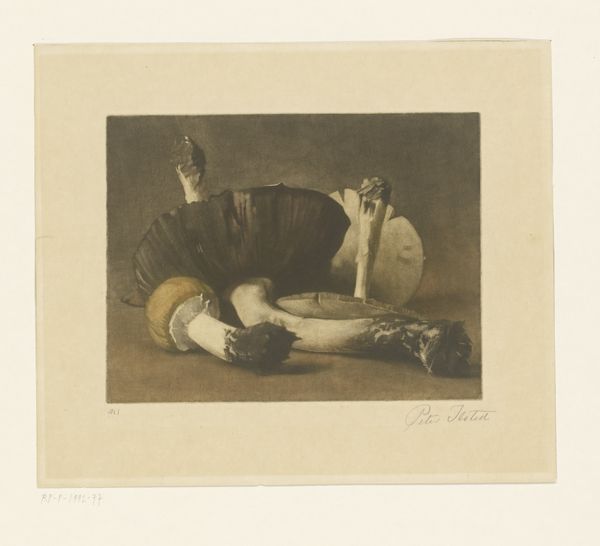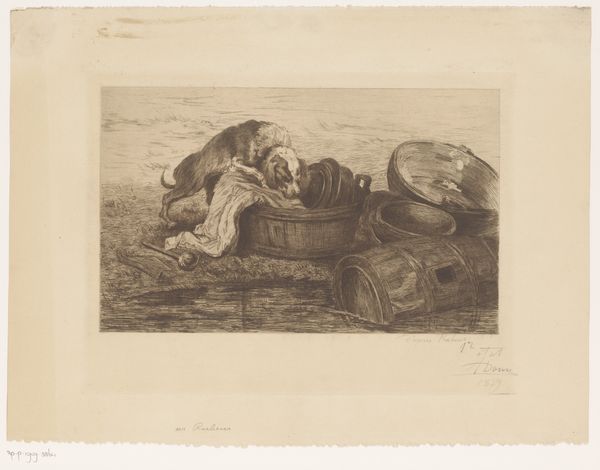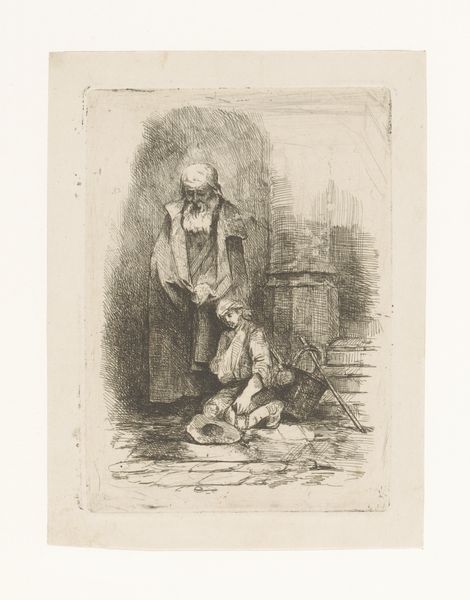
drawing, print, etching, paper
#
portrait
#
drawing
#
toned paper
#
light pencil work
# print
#
etching
#
old engraving style
#
paper
#
personal sketchbook
#
genre-painting
#
realism
Dimensions: height 137 mm, width 200 mm
Copyright: Rijks Museum: Open Domain
Henri De Graer created this small etching, "Twee kinderen liggen in het gras" or "Two children lying in the grass," using metal plate and acid. Etching is an indirect process, meaning the artist doesn't directly cut into the metal. First, a waxy coating is applied. The artist then scratches an image into this layer, exposing the metal, which is then submerged in acid, eating away the lines. The longer it sits, the deeper the lines become, and the more ink they hold, resulting in darker marks. The fine, precise lines made through etching allow for incredible detail in the children's clothing and faces. The subtlety in shading gives the work a sense of depth, making it feel like we're looking at a fleeting, intimate moment. What’s important here is that the artist chose a repeatable medium. Because multiple impressions of the matrix can be pulled, the image can be distributed to a broader audience. This contributes to our understanding of the social value of labor and the means of production. Ultimately, understanding the etched lines shows how an artist’s labor, care, and context are embedded in the artwork, inviting us to reconsider traditional distinctions between art and craft.
Comments
No comments
Be the first to comment and join the conversation on the ultimate creative platform.
